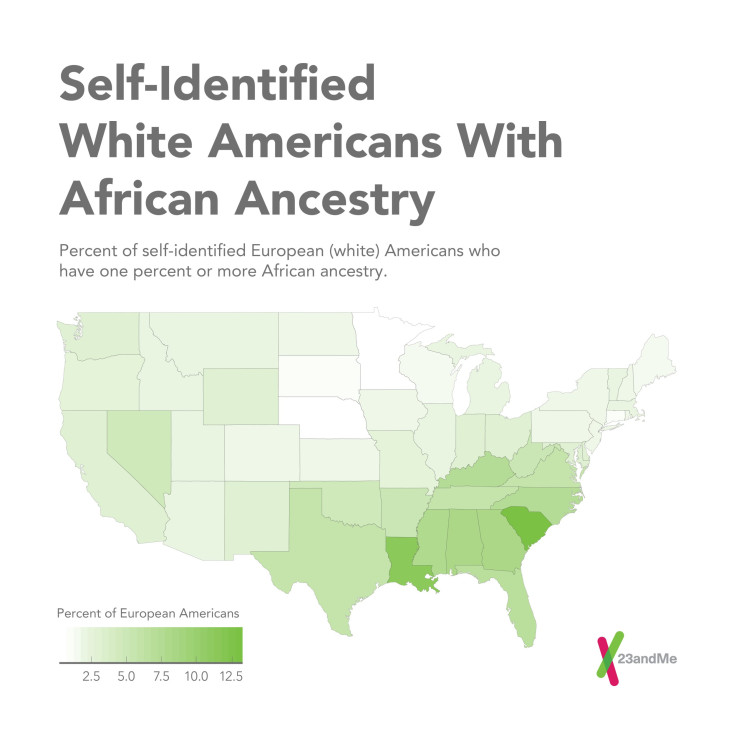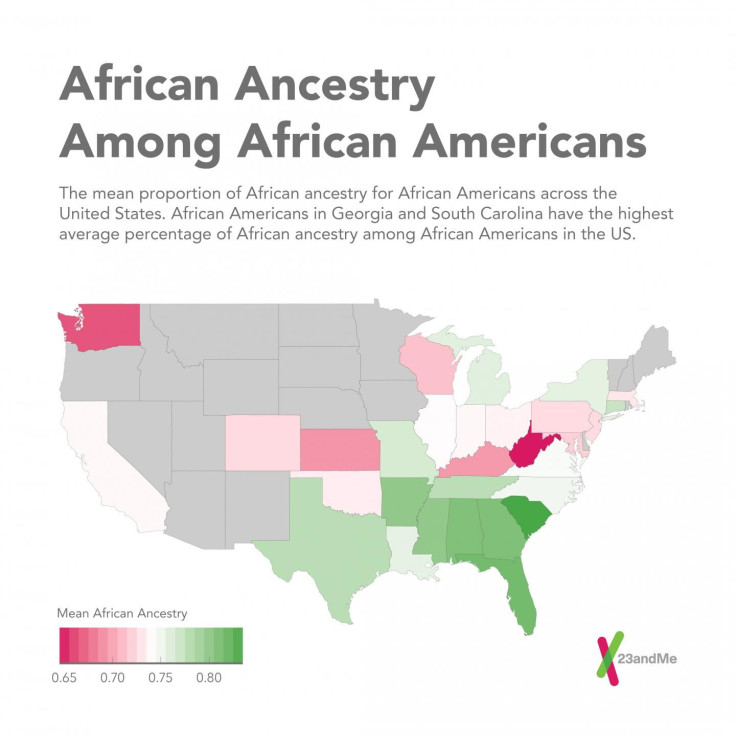Black And White In America: Study Reveals Many Americans Have Mixed Race Background They Were Unaware Of

Earlier this year, National Geographic made headlines with its "Changing Face of America" article. The story explained that America was becoming more comfortable with interracial relationships, and as a result, the future would be made up of a group of people with features from multiple races. A new study has challenged this hypothesis and suggested that this “mixed race future” is already here. We just never realized it.
The study, published by Cell Press, found that there is quite a large difference in the race that people identify with and what they actually are. In a recent study, researchers analyzed the DNA of more than 160,000 Americans who had offered their saliva as part of the 23andMe project. What researchers found was surprising.
The study found that, as expected, people tended to identify with the race that made up the majority of their background. However, for many, this self-identification was not completely accurate. According to the press release, the team estimated that as many as six million Americans who identify as white from a European background carry African ancestry and as many as five million self-described European white Americans have Native American ancestry.
"Our study not only reveals the historical underpinnings of regional differences in genetic ancestry but also sheds light on the complex relationships between genetic ancestry and self-identified race and ethnicity," said lead study author Katarzyna Bryc of 23andMe and Harvard Medical School in the press release.
As shown in the graphs, the highest concentration of African DNA in both blacks and whites was located in the southern American states.


The researchers believe that this African lineage in white Americans may have been lost or forgotten purposely, due to the social stigmas associated with America’s “one-drop” rule. Under the Jim Crow segregation rules of the South, one drop of Native American or African blood meant an individual was classified as “colored,” and with this classification came many restrictions. The researchers speculate that in an attempt to rise above the prejudice and overcome social ladder boundaries, many mixed race people remained silent on their African and Native American heritage in order to fit into white communities.
"These findings suggest that many individuals with partial African and Native American ancestry have 'passed' into the white community, thereby undermining the use of cultural labels that separate individuals into discrete, non-overlapping groups," Bryc said.
Similar results have been found, with one article published by The Guardian stating that one out of every three self-identifying white Americans have between two to 20 percent African genes, and 23andMe wrote on their blog that due to the process of slavery the average black American has around only 73 percent African DNA.
The number of people reporting a mixed race background grew by 32 percent between 2000 and 2010, but according to CNN this doesn’t exactly mean that there are more mixed race people but rather there are more people identifying with their blended heritage.
Another interesting finding of the study was evidence of immigration patterns in the DNA of the volunteers. For example, Scandinavian ancestry was found heaviest in white Americans living in Minnesota and the Dakotas. This is in line with the large numbers of Scandinavian immigrants who resettled in these regions during the late 19th century due to mounting economic pressure and overpopulation in their homelands.
Source: Bryc K, Duranc EY, Macpherson JM, Reich D, Mountain JL. The Genetic Ancestry of African Americans, Latinos, and European Americans across the United States. AJHG. 2014.



























